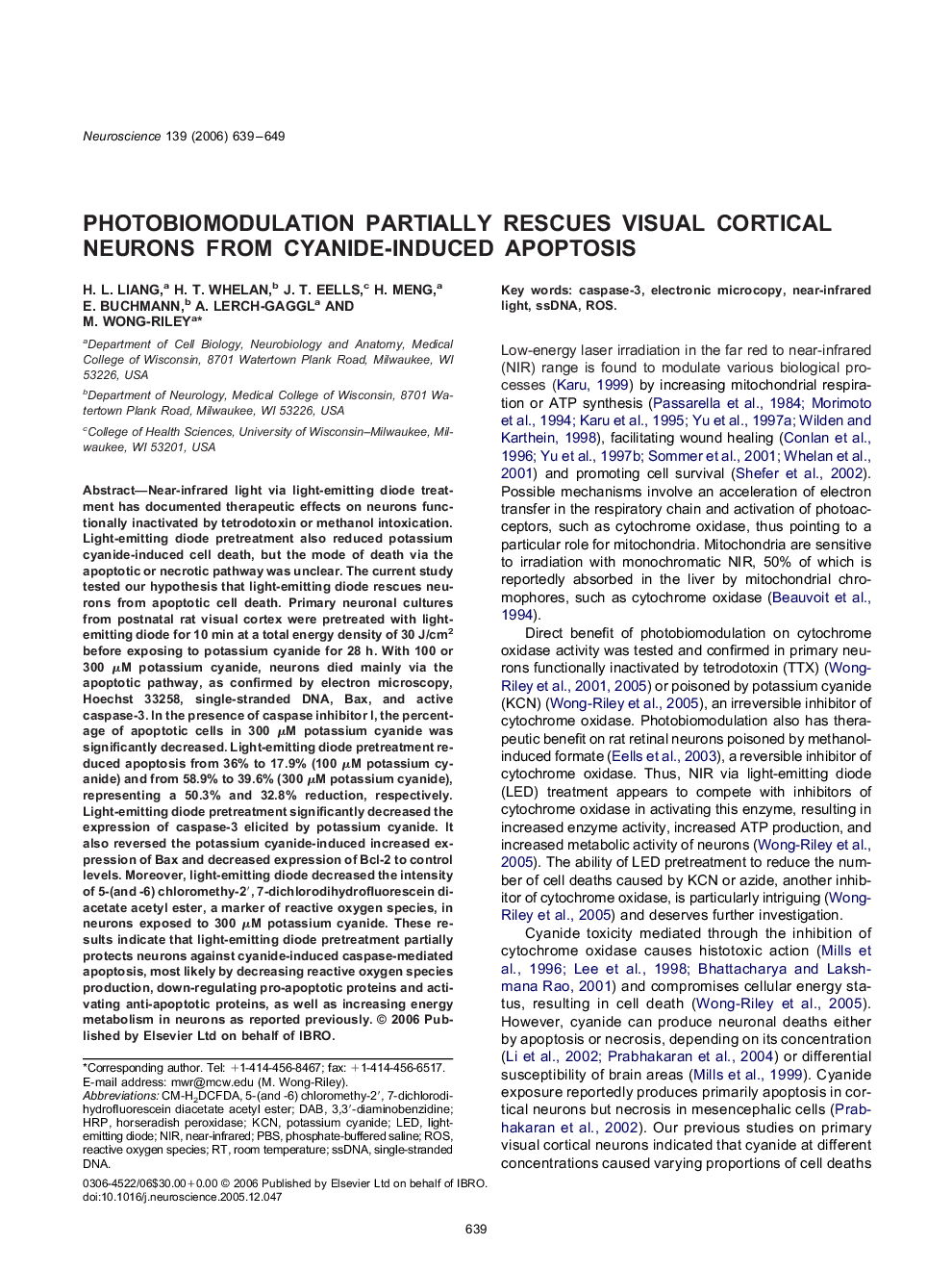| Article ID | Journal | Published Year | Pages | File Type |
|---|---|---|---|---|
| 4341894 | Neuroscience | 2006 | 11 Pages |
Abstract
Near-infrared light via light-emitting diode treatment has documented therapeutic effects on neurons functionally inactivated by tetrodotoxin or methanol intoxication. Light-emitting diode pretreatment also reduced potassium cyanide-induced cell death, but the mode of death via the apoptotic or necrotic pathway was unclear. The current study tested our hypothesis that light-emitting diode rescues neurons from apoptotic cell death. Primary neuronal cultures from postnatal rat visual cortex were pretreated with light-emitting diode for 10 min at a total energy density of 30 J/cm2 before exposing to potassium cyanide for 28 h. With 100 or 300μM potassium cyanide, neurons died mainly via the apoptotic pathway, as confirmed by electron microscopy, Hoechst 33258, single-stranded DNA, Bax, and active caspase-3. In the presence of caspase inhibitor I, the percentage of apoptotic cells in 300μM potassium cyanide was significantly decreased. Light-emitting diode pretreatment reduced apoptosis from 36% to 17.9% (100μM potassium cyanide) and from 58.9% to 39.6% (300μM potassium cyanide), representing a 50.3% and 32.8% reduction, respectively. Light-emitting diode pretreatment significantly decreased the expression of caspase-3 elicited by potassium cyanide. It also reversed the potassium cyanide-induced increased expression of Bax and decreased expression of Bcl-2 to control levels. Moreover, light-emitting diode decreased the intensity of 5-(and -6) chloromethy-2â², 7-dichlorodihydrofluorescein diacetate acetyl ester, a marker of reactive oxygen species, in neurons exposed to 300μM potassium cyanide. These results indicate that light-emitting diode pretreatment partially protects neurons against cyanide-induced caspase-mediated apoptosis, most likely by decreasing reactive oxygen species production, down-regulating pro-apoptotic proteins and activating anti-apoptotic proteins, as well as increasing energy metabolism in neurons as reported previously.
Keywords
Related Topics
Life Sciences
Neuroscience
Neuroscience (General)
Authors
H.L. Liang, H.T. Whelan, J.T. Eells, H. Meng, E. Buchmann, A. Lerch-Gaggl, M. Wong-Riley,
